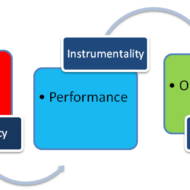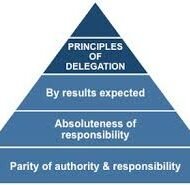Posted by Managementguru in Decision Making, How To, Human Resource, Social Media
on Jan 19th, 2016 | 0 comments

This is all about the art of changing hearts, minds and actions of people whom you move with, interact with every day and possibly want them to like you to get things done. What influences people to say yes? These are scientifically validated principles of persuasion that provide for small, practical and often costless changes that can lead to big differences in your ability to influence and persuade others in an entirely ethical way. What are you waiting for?

Posted by Managementguru in Human Resource, Leadership, Motivation
on Mar 17th, 2015 | 0 comments

6 Things a Manager Can Learn From MS Dhoni Leading from the front Staying cool Sharing the due credit with fellow-men Encouraging team members to make them better performers Staying Grounded Resource Utilization No, this article is certainly not about our Indian Cricket team’s captain; but he has a lot to offer to prove my point. Yes, I was contemplating about the various leaders- both in the political and economic sectors and how their attitude and perspective has a direct effect on the followers or sub-ordinates. I thought it would be good to start from M.S.Dhoni, the all powerful leader in his own way standing tall and cool. Don’t miss this powerpoint: The powerpoint given here depicts the different leadership styles pertaining to an organization – be it business, service, non-profit or educational. The motive may differ for each of the listed organizations above but all have to function effectively to reach that ulterior motive. There can’t be a second thought or opinion on this and how the emotional quotient of a leader impacts employee motivation and engagement is something phenomenal. It is directly evident from the functioning style of the employees and their attitude even when you just enter an organization. The impact of leadership styles on employee motivation and performance from Shyama Shankar My Bad Encounter: Recently I had been to a dermatologist for a consultation and even before I could inquire about the doctor’s availability, the girl at the front desk was very particular to know if I would be willing to pay three hundred bucks. I was taken aback to know that the fee was two hundred bucks for visiting during regular hours and three hundred for late hours (It was a sunday and late hours meant visiting the doctor after 12 noon). The hundred rupees did not matter to me at all but the way in which the man has trained his staff to put the patients into an uneasy position made me think – “Where service has to be the motto of his profession, money has REWRITTEN the ETIQUETTES in it own cruel way.” Matched Leadership: How to Use Leadership Styles Effectively Leadership style is one of the most debated topics in management which has influenced a great number of managers and employees. Leadership style extensively influences employee’s commitment and dedication. A participative and democratic kind of leader creates a positive work atmosphere, a coercive leader creates an unbalanced and negative atmosphere; nevertheless all kinds of leaders create a serious impact whether negative or positive. Transformational leaders provide a vision and a sense of mission, inspire pride, and gain respect and trust through charisma, as opposed to a simple exchange and agreement,(Bass et al.1990) whereas Transactional leaders communicate with their subordinates to explain how a task must be done and let them know that there will be rewards for a job done well (Avolio et al.1991). Laissez-faire leadership is a passive kind of leadership style, seen as not caring about other’s issues. There is no relationship exchange between the leader and the followers. It represents a non-transactional kind of leadership style in which necessary decisions are not made, actions are delayed, leadership responsibilities ignored, and authority unused. Now it is time to enjoy some funny quotes on Leadership: Only one man in a thousand is a leader of men — the other 999 follow women. Groucho Marx First rule of leadership: everything is your fault. A Bug’s Life The problem with being a leader is that you’re never sure if you’re being followed or chased. Claire A. Murray The key to being a good manager is keeping the people who hate me away from those who are still...

Posted by Managementguru in Glossary, Human Resource
on Dec 3rd, 2014 | 0 comments

This HR Glossary pertains to ‘A’ series terminologies Ability Aptitude or competence, the skill or proficiency needed to perform certain tasks. Ability test An assessment instrument used to measure an individual’s abilities, mental or physical skills level (i.e. problem solving, manual dexterity, etc.). Absenteeism Referred to as the habitual failure of employees to report for work when they are scheduled to work. Absolute ratings A rating method where the rater assigns a specific value on a fixed scale to the behavior or performance of an individual instead of assigning ratings based on comparisons between other individuals. Abstract reasoning The process of perceiving issues and reaching conclusions through the use of symbols or generalizations rather than concrete factual information. Acceptance theory of Authority A manager’s authority rests on his or her subordinate’s acceptance of his or her right to give orders and to expect subordinate’s compliance with them. Accessibility The extent to which a contractor’s or employer’s facility is readily approachable and does not inhibit the mobility of individuals with disabilities, particularly such areas as the personnel office, worksite and public areas. Accessible format Materials that are designed in alternate formats such as Braille, audiotape, oral presentation or electronically for individuals with visual impairments. Accident and Health Benefits Employee fringe benefits paid usually through employer funded insurance plans. Accountability The responsibility placed on an individual or group for their own or others’ actions, conduct, performance, projects, etc. Accreditation A process of external quality review and certification by a recognized body that evaluates individuals, colleges, universities and educational programs to assure they are performing the functions that they claim to be performing in a competent manner. Achievement test A standardized testing instrument used to measure how much an individual has learned or what skills he or she has attained as a result of education, training or past experience. Acquisition The process of acquiring control of another corporation by purchase or stock exchange. Action learning A learner-driven, continuous learning process where learning revolves around the need to find solutions to real problems. Active learning The process of learning new knowledge, skills and behaviors through taking specific actions or performing specific tasks. Active listening A manner of listening that focuses exclusively on what the other person is saying and validates understanding of both the content of the message and the emotions underlying the message to ensure exact understanding. Activities of daily living (ADL) The personal care activities which are essential to an individual’s everyday living, including eating, bathing, grooming, dressing, mobility and toileting. Action-centered Leadership A theory of leadership which focuses on what leaders actually have to do in order to be effective,rather than on the personal qualities that they need to be good leaders, and which believes that leadership can be taught. Adjunct program A supplemental training tool that applies programming principles to existing instructional modules, materials, texts, manuals, etc., that are designed to direct the learner to specific areas within the module. Adjudicator: Aa person who gives a decision on a problem, an adjudicator in an industrial dispute. Administrative service organization (ASO) A term used to define an organization that provides outsourced solutions to meet the administrative and HR needs of the client with the client retaining all employment-related risks and liabilities. Administartive Officer Office employee responsible for managing the office, running errands and assisting the executive or boss, typing, filing, and other office related duties as required by the specific job. Adverse action Any act by an employer that results in an individual or group of individuals being deprived of equal employment opportunities. Adverse impact A substantially different rate of selection in hiring, promotion or other employment decision that works...

Posted by Managementguru in Business Management, Human Resource, Organisational behaviour, Principles of Management, Training & Development
on Mar 22nd, 2014 | 0 comments

How to create an effective and Sustainable Model for Training and Development? The term “change” is synonymous with competitiveness in modern world and thus corporate firms are in a position to evolve unique, sustainable and strategic training model for employees that will facilitate the following: On one hand the training process motivates the suitable employees to perform well and makes them perceive their role properly in order to accomplish the enterprise objectives. On the other hand the organisation keeps itself abreast by constantly updating and understanding the training needs through Assessment of the external environment and Expectations of the employees in terms of rewards whether intrinsic or extrinsic. Porter and Lawler Model: The Expectancy Motivation Model of Porter and Lawler serves as an inspiration for effective training. The stress is on The value placed on performance outcome by the individual. The degree to which the individual believes that his efforts will lead to attainment of these rewards. Psychological aspect of this model: Almost all individuals are motivated by money ( by the way, Who doesn’t want money!). But money alone does not serve the purpose of motivation. Job satisfaction is a relative term in that different people find different things or elements motivating them in their work environment leading to job satisfaction. It might be Challenge Good inter personal relationship Pay Perks Culture Excellent leader Pressure Stress and the like… Assessment of training need: The training needs must be assessed by the respective organisations considering the following aspects: To transform the individual from the capacity of learner to executor Instil in him confidence to do the job well Relate his job to rewards so that he will try to excel Give your employees scope for career advancement Incorporate technical and technological innovations as part of your training process Physical, emotional and social elements in the internal as well as the external environment must be taken into consideration while training the workforce. Physical– relates to the physical fitness needed to perform the technical skills Psychological– relates to keeping the morale of the employees high at all points and maintaining an amiable work atmosphere Social– relates to the friendly relationship that should exist between the trainer and the trainees and among the trainees. Usefulness of the model: This model lends its support to the training and development process through three steps or stages. Diagnosis stage- Need analysis Formulation stage- Programme planning Evaluation Diagnosis stage: The interplay of ability and role perception Training brings out EFFICIENT as well as DEFICIENT performers. That is one good thing and also making the employee understand the role he is about to play as part of the organisation. Training through learning is one aspect which imparts knowledge and training is considered to be effective if one’s behaviour is modified as per the expectations and demands of the job. Role perception can be misunderstood by some individuals when they might try to exercise undue authority or overlook their duties and responsibilities. Confinement of authority Superior-Subordinate appraisal procedures Clear HR policy formulations are needed to avoid confusion and chaos in role playing. Formulation stage: The effected change through learning is expected to be retained by the employees throughout the career span in the organisation followed by constant grooming. The stress is on the value of the activity to be learnt Giving feedback on the progress of employees towards final training objectives Relate the learning activity to increasing, meaningful materials already studied outside the training programme. Evaluation stage: Training evaluation is particularly necessary when the organisation wants to encourage the competitive spirit amongst the trainers and evaluation is considered as a challenge by itself. If the training provided eliminates obstacles...

Posted by Managementguru in Human Resource, Organisational behaviour, Principles of Management
on Mar 19th, 2014 | 0 comments

You Can Delegate Authority, but Not Responsibility Responsibility of a Manager: A corporate manager is accorded with the huge responsibility of leading his subordinates in the right direction, by giving proper insights on the tasks to be accomplished. The success rate depends on how well he delegates his authority down the line to get things done. The art of delegation results not only in down sizing his work pressure but also in the empowerment of subordinates, that elevates them to a higher plane of understanding and achievement. An Excerpt from The Art of Delegation: Developing This Essential Managerial Skill Delegation helps you handover the authority of certain tasks to capable team members so that you free up your time to work on more pressing issues. But you still remain responsible to get those completed in proper way. Hence it is essential to have a status check or communication with the team member on regular basis. Accountability of Subordinates: The subordinates, when entrusted with the responsibilities of performing a task by themselves and the necessary authority to make decisions within the area of their assigned duties, are obliged to perform. The necessary assistance and training for the new assignment has to be planned for, by the manager to make them perform as per the expected standards. The thing is right people should be chosen for the entrusted job. They should possess the zeal and enthusiasm to deliver the desired output. Some people perform beyond expectations and they should be rewarded with additional responsibilities. Whatever the case may be, it is a wise thing to delegate simple assignments at the initial stage, and proceed with more challenging jobs depending upon the caliber of the incumbent. THE ENTREPRENEUR’S GUIDE TO DELEGATION Clear and Clever Delegation: Clear and clever delegation facilitates to build a formal organization structure, where the subordinates are trained well and they look up to the manager for direction and guidance. Although the authority is delegated, the manager is held accountable and answerable to the management for the performance output or the end result. Some managers hesitate to delegate, just for the reason that their weaknesses might get exposed. Some don’t have confidence in their subordinates. Some even fear that they might lose their power if the subordinate is very shrewd and exceeds the expectations. Managers fail because of poor delegation; the reasons being personal attitude of managers in delegating authority. Let us understand some of the basic principles to be adhered to while delegating: The authority delegated to subordinates should be adequate enough to ensure their ability to accomplish the expected results. Authority can be delegated but responsibility can never be delegated. Responsibility of subordinates is “performance” and that of managers is “responsibility for the action of their subordinates”. One cannot be held responsible for a task if he has only limited authority. There need to be a balance between authority and responsibility. The presence of a single superior will invoke greater feeling of personal responsibility among the subordinates. Lack of receptiveness on the superior’s part will incur greater loss in terms of performance and efficiency. Instead, a manager should develop a trustful attitude towards his subordinates and should have the patience to explain the policies, objectives and guidelines and give sufficient authority to perform a duty. HOW WELL EMPLOYEES KNOW ABOUT YOUR ORGANIZATION? Although initially the efforts taken to train a subordinate is time consuming, the more empowered he becomes, less is your time taken to accomplish the enterprise objectives. The superior must be able to create a climate of mutual trust and goodwill, to make delegations effective in the light of expected...










